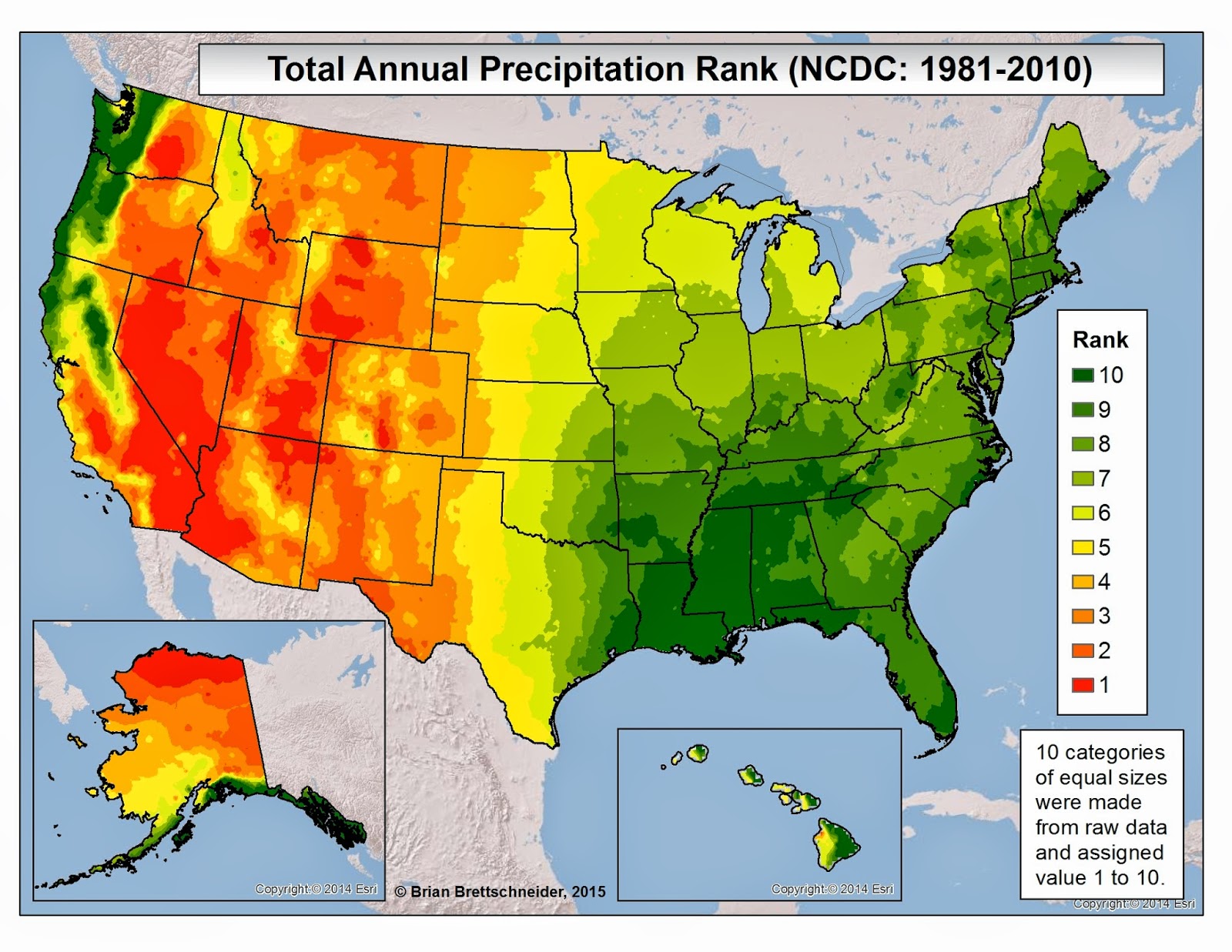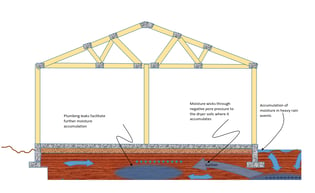Rule of Thumb: Determining historical moisture and temperature patterns is an important part of diagnosing foundation problems.
In order to understand what is happening with the soil, we first need to understand how the historical moisture patterns have affected that soil. Over very long periods of time the evapotranspirative cycle will make long term moisture levels fall within normal parameters. Water by rain and snow makes its way into the water table and into the soil in general. The moisture levels in the soil within general parameters will be constant.
Depending on your particular area, there may on average be more or less average rainfall and thus soil moisture contents. See the below map as shown on blog for the Community Collaborative Rain, Hail, & Snow Network.

Average precipitation as reported on https://www.cocorahs.org
If you are in an area with more average precipitation, you are likely to have more moisture in your soil. If you have more historical more moisture in your soils, the accumulation as described in my previous post will affect the soil in different ways.
If you have a large amount of moisture in your soil then additional accumulation may have less of an effect. Suction plays a lesser effect, and if initial moisture is high, then during dry periods loss of moisture from around the perimeter maybe be more common than additional accumulation.
In summary:






